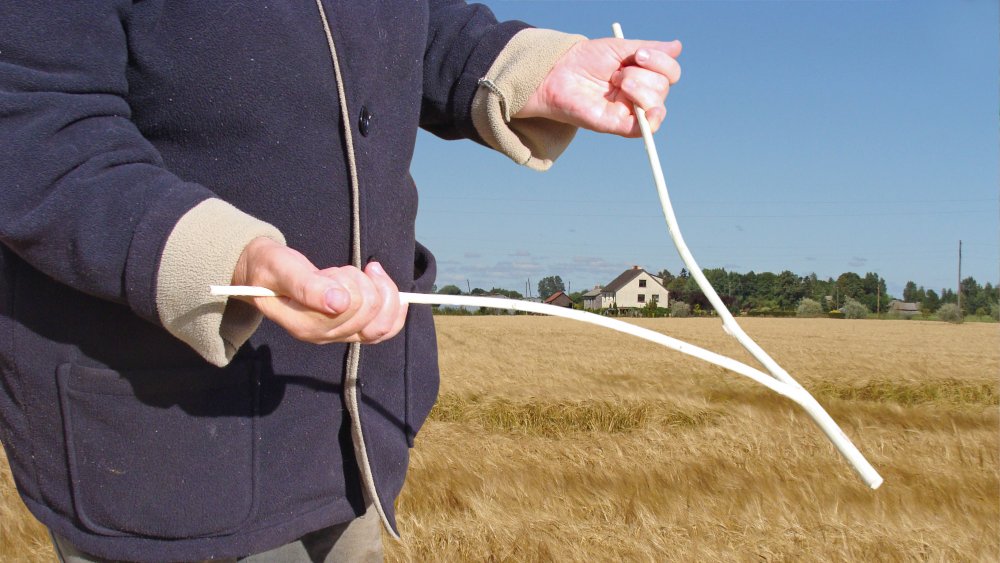The Bizarre History Of Dowsing Rods
In "De Officiis," Cicero opined about the possibility of a post-scarcity world — "If all that is needed for our nourishment and support arrives to us by means of some divine rod... then each of us, free from all care and trouble, may give himself up to the exclusive pursuit of study and science."
Luckily, just such a magic wand arrived in the Middle Ages in the form of the mystical dowsing rod. The concept was simple: through the use of a stick and easy-to-master, DIY supernatural forces, the weird uncles of the world could find whatever goods were hidden beneath the Earth. Generally, the practice is associated with sniffing out subterranean water sources, but Curious Myths of the Middle Ages points out that it's been used as a spiritual multi-tool, good for finding "veins of precious metals, springs of water, thefts, and murders." An LA Times account from 1988 described a woman using dowsing to determine the "energy levels" of her grapefruit. Fear not, the citrus was discovered to be "top grade."
Between finding gold and figuring out whether or not grapefruit is good, dowsing clearly wears a lot of hats. How does such a remarkable feat work?
Dowsing rods don't work
The earliest accounts of modern dowsing, also known as "divining," "water witching," or "doodlebugging," go back to ancient Greece. Early proponents of the practice would grab a y-shaped stick with both hands, following the pull of the apparatus's third prong. When the prong dipped towards the ground, they knew that they had found whatever they were looking for. As time went on, new and exciting devices were developed, such as sticks that weren't y-shaped. Science never stops moving forward. " The practice of dowsing has been described as sinful and even demonic by everyone from Martin Luther to the Jesuits, according to Aeon.
Today, most researchers agree that any successes that dowsers have experienced come down to random chance, and that the motion of a dowsing rod can be pretty well attributed to ideomotor response — the same subconscious muscle movements that make Ouija boards talk. For a great example of how this works, try holding a pendulum as still as possible while only thinking about moving it. Without meaning to, your body will make small, subtle motions, causing the pendulum to jiggle.
Or maybe your weird uncle has superpowers. No judgement.

